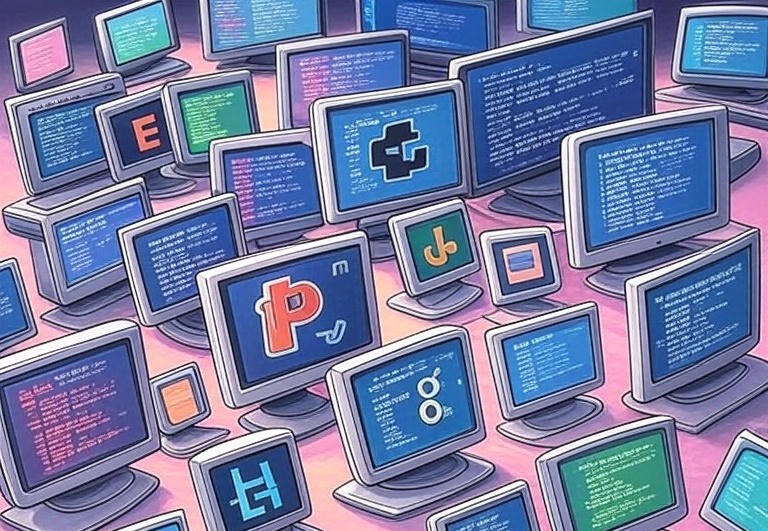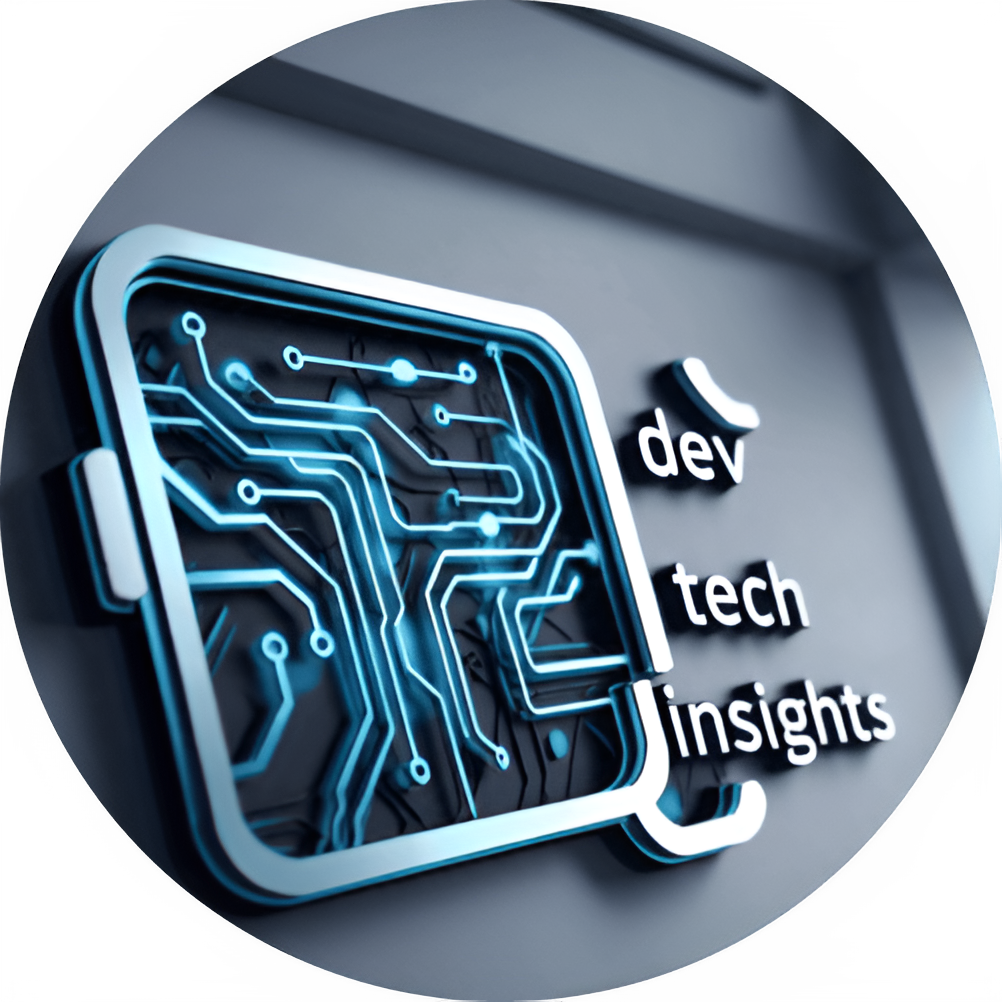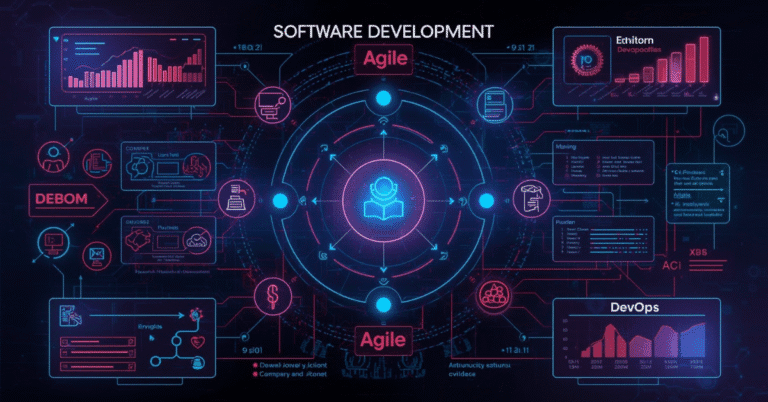
The Evolution of Programming Languages: From Low-Level to AI-Native
Table of Contents
1. Introduction: A Journey Through Code
Programming languages have been the backbone of every digital revolution — from the humming mainframes of the 1950s to today’s AI-driven, cloud-native ecosystems.
What began as raw binary punched into paper cards has evolved into human-readable, context-aware languages that collaborate with artificial intelligence itself.
In the early days, developers wrestled with low-level machine code, where every instruction was a direct conversation with hardware. Over time, layers of abstraction gave rise to high-level languages like C, Java, and Python, enabling faster development and broader innovation.
Now, we’re entering a new era — AI-native programming — where code can be suggested, optimized, and even generated in real time by intelligent agents. This shift doesn’t just change how we write software; it’s redefining what it means to be a developer.
2. The Low-Level Foundations
In the beginning, there was no Python, JavaScript, or even C. Programmers spoke directly to the machine in binary (1s and 0s) or assembly language — terse, hardware-specific instructions that demanded precision and deep understanding of the system’s architecture.
Every function, every loop, every calculation had to be meticulously planned. One wrong bit could crash the entire program. While slow and complex, these low-level languages offered unmatched control over the machine, laying the groundwork for everything that followed.
This was the age of machine intimacy, where developers knew the hardware’s quirks almost as well as they knew their own code.

3. The Rise of High-Level Languages
The limitations of low-level programming became evident as computers entered mainstream business, science, and eventually personal use. Writing software directly in assembly or binary was time-consuming, error-prone, and required an almost encyclopedic knowledge of hardware.
The solution came in the form of high-level languages — abstracted from the hardware, closer to human language, and designed for readability, portability, and productivity.
In the 1970s, C emerged as a revolutionary bridge — still powerful enough for system programming but far easier to write than assembly. In the 1980s and 90s, Java brought the promise of “write once, run anywhere,” changing the game for cross-platform applications. Meanwhile, Python, born in the early 1990s, embraced simplicity and readability, becoming the go-to language for rapid development and later, data science.
High-level languages allowed teams to focus more on solving problems and less on the mechanics of the machine. This democratization of programming set the stage for today’s agile, global-scale development ecosystems.

If you want to read more details,then see our pdf below
4. The Age of Scripting & Specialization
By the late 1990s and early 2000s, the internet had transformed from a niche technology to a global necessity. This shift demanded languages that could handle web interactivity, server-side processing, and rapid deployment.
JavaScript emerged as the lifeblood of client-side interactivity, turning static HTML pages into dynamic, responsive experiences. Simultaneously, PHP simplified server-side programming, powering early giants like Facebook and WordPress. Other scripting languages like Ruby (with Rails) and Perl offered specialized solutions, emphasizing developer happiness and rapid prototyping.
This was also the era of domain-specific languages (DSLs) — specialized tools designed for very specific tasks, such as SQL for databases or MATLAB for mathematical modeling. Development was no longer one-size-fits-all; instead, programmers had a toolbox of languages, each suited to particular environments and business needs.
These scripting and specialized languages fueled the dot-com boom, enabling developers to move faster, deploy more often, and serve millions of users worldwide.
Useful Links
- Software Development Life Cycle (SDLC) in 2025: Stages, Models, and Modern Practices
- The Rise of Composable Software: Why Developers Need to Think Modular in 2025
- Toil is Back: Why Even with AI, SREs Feel the Burn in 2025
- Best Python Libraries for Automation Developers Overlook in 2025
- Functional Programming in 2025: Are Pure Functions Making a Comeback?
- Why Zig Could Be the Next Big Language for Systems Programming in 2025

5. The AI-Native Era
We are now entering a paradigm shift unlike any before — AI-native programming.
In this emerging reality, code is no longer entirely handwritten by humans. Instead, developers collaborate with AI systems capable of generating, optimizing, and even refactoring entire codebases based on high-level instructions or natural language prompts.
Tools like GitHub Copilot, ChatGPT with code plugins, and experimental AI frameworks can already produce functional prototypes in seconds. Soon, we may see self-optimizing programs that learn from user feedback, adapt in real time, and continuously improve without direct human intervention.
Languages themselves are evolving for this future. We may see syntax and frameworks designed not for human readability alone, but for AI interpretability, enabling faster human–machine collaboration. This also raises important questions about authorship, security, and ethics — when AI writes code, who is responsible for bugs, vulnerabilities, or unintended consequences?
The AI-native era promises unprecedented speed, scalability, and creativity in software development, but it demands vigilance, governance, and a new developer mindset to harness it safely.

6. The Road Ahead
The journey from low-level assembly to AI-native programming has been nothing short of revolutionary — but we’re far from the finish line.
The future of programming may involve fully autonomous coding agents, quantum-ready development environments, and tools that merge code with natural human thought processes.
We can expect languages to become more abstract yet more powerful, allowing developers to focus entirely on what needs to be done rather than how to do it. For example:
- Natural language-driven programming where English or another spoken language becomes the primary interface.
- Adaptive languages that change syntax or structure based on the project’s complexity and team needs.
- Security-first design baked into every layer of the language, anticipating threats before they happen.
Yet with progress comes responsibility. As programming becomes more accessible, security risks, job role shifts, and ethical dilemmas will grow. Developers, educators, and organizations must ensure that the democratization of coding is paired with strong governance, privacy protection, and ethical AI use.
The next era of programming will be about collaboration between humans, AI, and possibly quantum systems — pushing the boundaries of what’s possible, while keeping the core principles of computing intact.

FAQS
1. What is meant by AI-native programming?
AI-native programming refers to a development approach where code is generated, optimized, and maintained in collaboration with artificial intelligence systems. Instead of manually writing every line, developers give high-level instructions and let AI handle much of the implementation.
2. Will AI-native programming replace human developers?
Not entirely. AI-native tools will automate repetitive and boilerplate coding, but humans will still be essential for architecture design, decision-making, ethical considerations, and problem-solving that require human judgment.
3. How do programming languages evolve over time?
Programming languages evolve based on advancements in computing hardware, development methodologies, and user needs. We’ve moved from low-level machine code to high-level languages, and now toward AI-assisted and AI-native code generation.
4. What skills should developers focus on in the AI-native era?
Future developers should learn AI tool integration, prompt engineering, ethical AI usage, and remain strong in fundamental programming concepts, algorithms, and problem-solving skills.
5. Is AI-native programming secure?
Like any technology, AI-native programming carries risks. Poorly monitored AI-generated code could introduce vulnerabilities. Security audits, human review, and AI governance frameworks are crucial for safe adoption.

🚀 Let's Build Something Amazing Together
Hi, I'm Abdul Rehman Khan, founder of Dev Tech Insights & Dark Tech Insights. I specialize in turning ideas into fast, scalable, and modern web solutions. From startups to enterprises, I've helped teams launch products that grow.
- ⚡ Frontend Development (HTML, CSS, JavaScript)
- 📱 MVP Development (from idea to launch)
- 📱 Mobile & Web Apps (React, Next.js, Node.js)
- 📊 Streamlit Dashboards & AI Tools
- 🔍 SEO & Web Performance Optimization
- 🛠️ Custom WordPress & Plugin Development







